
Greater Queens Podiatry, PLLC
 (718) 229-0222
(718) 229-0222
 (718) 229-0222
(718) 229-0222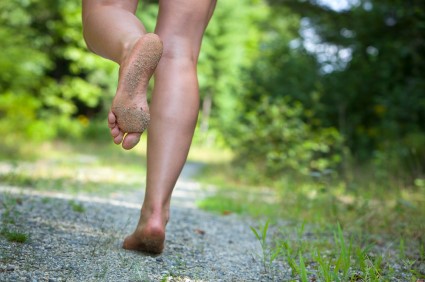 Barefoot running has long been debated to be either beneficial or detrimental to our feet, with arguments that barefoot running is natural, or that it can lead to extensive injury because our feet are conditioned to wear cushioned shoes. Research from Harvard anthropologist Daniel Lieberman and his fellow researchers suggested that minimalist running helped “deliver greater running economy and [led to] fewer injuries.” Barefoot running can offer an alternative lifestyle change for those interested in starting. When proper procedures are followed, the risk of injuries occurring from barefoot running decreases.
Barefoot running has long been debated to be either beneficial or detrimental to our feet, with arguments that barefoot running is natural, or that it can lead to extensive injury because our feet are conditioned to wear cushioned shoes. Research from Harvard anthropologist Daniel Lieberman and his fellow researchers suggested that minimalist running helped “deliver greater running economy and [led to] fewer injuries.” Barefoot running can offer an alternative lifestyle change for those interested in starting. When proper procedures are followed, the risk of injuries occurring from barefoot running decreases.
Barefoot running has its own share of benefits and disadvantages. If you have any concerns about your feet or ankles, contact Dr. Nicholas Megdanis from Greater Queens Podiatry PLLC. Our doctor will treat your foot and ankle needs.
Barefoot Running
The Impact of Barefoot Running
-Running without shoes changes the motion of your running, as most running is done by landing on the heel of the feet.
-Running barefoot requires a different way of running; the landing is done on the front part of the feet.
The Advantages of Barefoot Running
-When running and landing on the front feet, the impact on the feet and ankle is reduced, this can reduce stress injuries.
-It strengthens muscles in the feet and ankles and the lower legs.
-Balance of the body is improved and there is a greater sensory input from the feet to the rest of the body.
The Drawbacks of Barefoot Running
-No protection while running, makes it likely that runners will land on sharp objects and scrapes, bruises and cuts on the feet will result.
-Blisters may form.
-Possibility of plantar fascia problems.
-Risk of getting Achilles tendonitis.
So what can runners do to make barefoot running safe? It’s best to make a slow transition from running shoes to barefoot running. Once the feet begin to adjust, try walking, then jogging and gradually increasing the distance. Minimalist running shoes may also be an option.
If you have any questions, please feel free to contact our office located in Bayside, New York. We offer the newest diagnostic and treatment technologies for all your foot and ankle needs.
Barefoot running is becoming a more and more popular running trend throughout the running and jogging communities. However, running without shoes also affects the motions of your stride. When barefoot running, choosing to run without shoes is not the only adjustment you will have to make.
Whenever you run normally with shoes, your heel strikes the ground first as you land while you roll over the ball of your foot and push off with the front part and toes. Barefoot runners land on the front part of their feet and not their heels. This shifts the impact from the back to the front of the foot. In order to do this safely and without much injury, runners need to reduce their stride to create softer landings.
One of barefoot running’s biggest advantages is the reduced risk of injury. Landing on the front of your foot with a reduced stride lessens the stress placed on the back of the foot, heels, and ankles. It also works out many muscles in the feet, ankles, and lower legs that you do not normally get to strengthen because of the different motions. Your posture and balance are also improved with barefoot running, as is your sensory input from your feet to the rest of your body. Studies have shown that countries that have large populations of people who do not wear shoes every day are at lower risk for foot and ankle injuries and complications.
However, there is still some skepticism behind barefoot running because of some disadvantages it brings. One of these is the complete lack of protection for your feet while running. Bruises, scrapes, cuts, and even blisters can easily form when you have no protection from sharp or rough objects on the ground. Landing on the front of your feet can also cause Achilles tendonitis because of the overuse of the Achilles tendon.
Despite this, barefoot running can be made safe and enjoyable if you make a slow transition from your normal running routine into barefoot running. Rather than jumping straight into barefoot running, gradually work your way from walking to jogging to running, increasing the distance each time. It is also recommended to start off on flat, even surfaces that do not contain sharp or dangerous objects because your feet are unprotected. Minimalist running shoes are a great middle ground to start with because they combine the protection of shoes with the fit and feel of barefoot running.
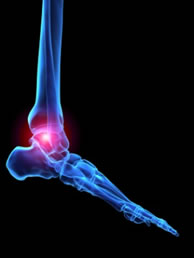 Osteoarthritis, a debilitating disease that affects your body’s tissue and cartilage, can affect people of all ages. Although osteoarthritis symptoms usually flare up around the age of 65, it can also affect younger individuals. Many different factors can contribute to osteoarthritis, including obesity, genes, and injuries, which can promote the early onset of symptoms. Osteoarthritis is a form of arthritis, which affects “1 in 5 adults in the United States,” which amounts to “at least 27 million Americans.”
Osteoarthritis, a debilitating disease that affects your body’s tissue and cartilage, can affect people of all ages. Although osteoarthritis symptoms usually flare up around the age of 65, it can also affect younger individuals. Many different factors can contribute to osteoarthritis, including obesity, genes, and injuries, which can promote the early onset of symptoms. Osteoarthritis is a form of arthritis, which affects “1 in 5 adults in the United States,” which amounts to “at least 27 million Americans.”
Arthritis can be a difficult condition to live with. If you are seeking treatment,contact Dr. Nicholas Megdanis from Greater Queens Podiatry PLLC. Our doctor will treat your foot and ankle needs.
Arthritic Foot Care
Arthritis is a joint disorder that involves inflammation of different joints in your body, such as in your feet. Arthritis is often caused by a degenerative joint disease and causes mild to severe pain in all affected areas. On top of this, swelling and stiffness in the affected joints can also be a common symptom of arthritis.
In many cases, wearing ill-fitting shoes can worsen the effects and pain of arthritis. Wearing shoes that have a lower heel and extra room can help your feet feel more comfortable. In cases of rheumatoid arthritis, the arch in your foot may become problematic. Buying shoes with proper arch support that contour to your feet can help immensely.
Alleviating Arthritic Pain
· Exercises that stretch the foot can prevent further pain and injury and increase mobility
· Most of the pain can be alleviated with anti-inflammatory drugs, heat, and topical medications
· Massages can help to temporarily alleviate pain.
It is best to see your doctor for the treatment that is right for your needs and symptoms. Conditions vary, and a podiatrist can help you determine the right method of care for your feet.
If you have any questions, please feel free to contact our office located in Bayside, New York. We offer the newest diagnostic and treatment technologies for all your foot and ankle needs.
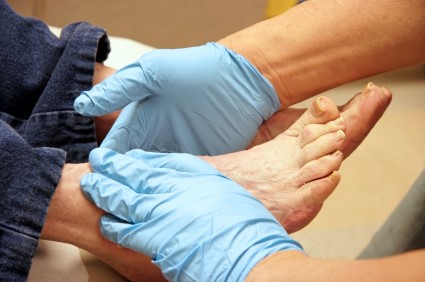 Cryotherapy is one potential treatment option for soothing the feet, especially if you have arthritis. First developed by the Japanese during the 1970s, cryotherapy is a “non-invasive, whole-body hyper-cooling treatment” that is often used for professional athletes. The method is said to reduce inflammation in the body through the rapid cooling of your body in -160 to -260 Fahrenheit temperatures.
Cryotherapy is one potential treatment option for soothing the feet, especially if you have arthritis. First developed by the Japanese during the 1970s, cryotherapy is a “non-invasive, whole-body hyper-cooling treatment” that is often used for professional athletes. The method is said to reduce inflammation in the body through the rapid cooling of your body in -160 to -260 Fahrenheit temperatures.
Foot therapy is necessary for those recovering from both foot deformities and foot injuries. If you have concerns regarding therapy, contact Dr. Nicholas Megdanis from Greater Queens Podiatry PLLC. Our doctor will treat your foot and ankle needs.
Most common injuries
People who are constantly on their feet are prone to a variety of injuries. Therefore, it is important to take part in physical therapy in order to get back on the right track quickly.
What to do when injured
Physical Therapy – This specialized treatment will focus on the affected area, speeding up recovery and the overall healing process. This is important for those wanting to get back into the game quickly. It is a proven method that has helped millions of people return from any injury.
During physical therapy you will undergo regimented training to get back into full form. Training is often very difficult, especially at first when the foot feels weak. These are some steps physical therapy often involves:
Basic stretching & twisting exercises – getting the feet’s mobility and flexibility up.
Massaging – the therapist will massage the injured area in order to activate the muscles and relax them.
Strengthening Exercises – this allows the muscles in the affected area to regain their full strength, a vital step towards full recovery.
If you have any questions, please feel free to contact our office located in Bayside, New York. We offer the newest diagnostic and treatment technologies for all your foot and ankle needs.
Whether in practice or in the game, athletes put their bodies through great stress. Some sports demand more from the body than others. However, every sport has an element of inorganic movement or unnatural motion. For ample, in softball, a pitcher winds up and flings her body with an incredible amount of dexterity in order to get the most ideal velocity out of her pitches. This motion, incredibly taxing on the body, can cause serious injury.
One of the most common issues of athletic injuries happens in the feet. If it’s a damaging fracture that leaves the athlete sidelined or just asimple turf toe, foot injuries can still be very frustrating and painful. Regardless of the sport, athletes still require use of their feet in some fashion. This is why foot therapy is extremely vital for getting athletes back on the right track to return to the field.
No matter the injury, the best way to speed up therecovery period is to receive physical therapy. Physical therapy has proven to work for millions of people. Professional physical therapists are specificallytrained to help people return to proper form from any injury.
During physical therapy, you will go through organized training in order to get back into form. Sometimes training can be quite difficult, especially in the beginning when there is more pain and the foot feels awkward. To alleviate this, you will do basic twisting and stretching exercises in order to get flexibility and foot mobility back up. The therapist will also massage the injured area to activate and relax muscles. Over time you will eventually move up to strengthening exercises, designed specifically so that the injured area is exercised.
Foot therapy for sports is a modern science miracle. Unlike other treatments that may employ the use offancy chemicals and terminology, physical therapy is an evidence-based practice thatoffers the same benefits. Due to huge advancements in the knowledge of muscles and joints, physical therapists can turn catastrophic injuries around so that athletes can return to the game once more.
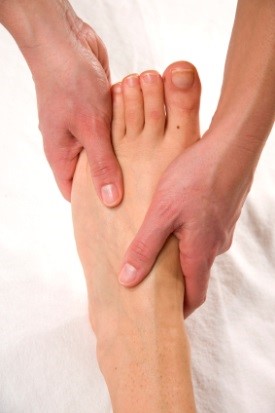 Diabetic foot ulcers are known as injuries on the feet that are suggested to be experienced by about “15 percent of diabetics,” and can usually start out small as blisters, calluses, or small cuts. Diabetic ulcers that are not treated can progress into a more serious issue, become infected, and can be extremely harmful for the diabetic person. Infections caused by diabetic ulcers can spread throughout the body and be difficult to treat at later stages. Diabetes can impair the blood cells and the immunity system.
Diabetic foot ulcers are known as injuries on the feet that are suggested to be experienced by about “15 percent of diabetics,” and can usually start out small as blisters, calluses, or small cuts. Diabetic ulcers that are not treated can progress into a more serious issue, become infected, and can be extremely harmful for the diabetic person. Infections caused by diabetic ulcers can spread throughout the body and be difficult to treat at later stages. Diabetes can impair the blood cells and the immunity system.
Diabetic foot care is important in preventing foot ailments such as ulcers. If you are seeking treatment, contact Dr. Nicholas Megdanis from Greater Queens Podiatry PLLC. Our doctor will treat your foot and ankle needs.
Diabetic Foot Care
Diabetes affects millions of people every year. Diabetes can damage blood vessels in many parts of the body, including the feet. Because of this, taking care of your feet is essential if you have diabetes, and having a podiatrist help monitor your foot health is highly recommended.
The Importance of Caring for Your Feet
· Routinely inspect your feet for bruises or sores.
· Wear comfortable shoes that provide adequate support.
Patients with diabetes should have their doctor monitor their blood levels because blood sugar levels play such a huge role in diabetic care. Monitoring these levels on a regular basis is highly advised.
It is always best to inform your healthcare professional of any concerns you may have regarding your feet, especially for diabetic patients. Early treatment and routine foot examinations are keys to maintaining proper health, especially because severe complications can arise if proper treatment is not applied.
If you have any questions, please feel free to contact our office located in Bayside, New York. We offer the newest diagnostic and treatment technologies for all your foot and ankle needs.
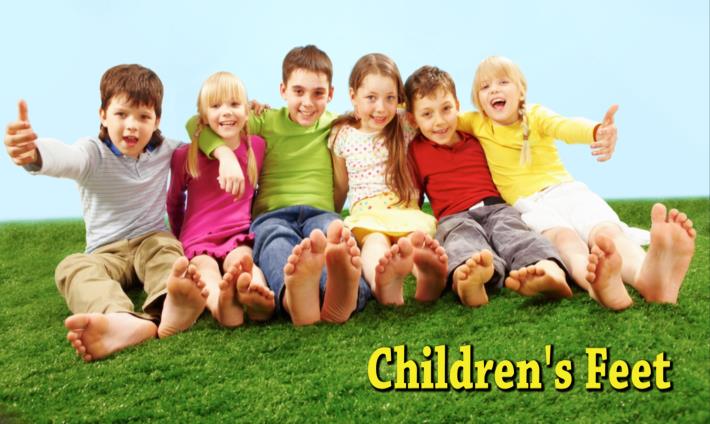 Children’s feet and ankles are both especially prone to injury since they are not wholly developed yet. If your child participates often in sports, make sure to check them for bodily injuries. Softer surface sports can “create less trauma to the joints, whereas the harder surfaces can take their toll.” Small symptoms can progress into larger problems later on as your child grows older. Children can suffer from inflammation in the heel growth plate, also known as calcaneal apophysitis, achilles tendonitis, plantar fasciitis, and stress fractures. Repeated stress and strain on your children’s bodies can lead to these issues, so make sure to have them checked regularly.
Children’s feet and ankles are both especially prone to injury since they are not wholly developed yet. If your child participates often in sports, make sure to check them for bodily injuries. Softer surface sports can “create less trauma to the joints, whereas the harder surfaces can take their toll.” Small symptoms can progress into larger problems later on as your child grows older. Children can suffer from inflammation in the heel growth plate, also known as calcaneal apophysitis, achilles tendonitis, plantar fasciitis, and stress fractures. Repeated stress and strain on your children’s bodies can lead to these issues, so make sure to have them checked regularly. 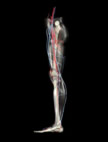 There are many different symptoms and causes behind poor circulation, all of which can indicate serious problems in the body. Symptoms can commonly include feelings of numbness, cramps, the appearance of varicose veins, feelings of pins and needles, and feelings of heaviness on your limbs. Vascular disease is also another name for poor circulation in the body. Treating your poor blood circulation involves exercising more often, eating a healthy diet, and stopping smoking.
There are many different symptoms and causes behind poor circulation, all of which can indicate serious problems in the body. Symptoms can commonly include feelings of numbness, cramps, the appearance of varicose veins, feelings of pins and needles, and feelings of heaviness on your limbs. Vascular disease is also another name for poor circulation in the body. Treating your poor blood circulation involves exercising more often, eating a healthy diet, and stopping smoking.
Poor circulation is a serious condition and needs immediate medical attention.To learn more, contact Dr. Nicholas Megdanis from Greater Queens Podiatry PLLC. Our doctor will treat your foot and ankle needs.
Poor Circulation in the Feet
Poor blood circulation in the feet and legs can be caused by peripheral artery disease (PAD), which is the result of a buildup of plaque in the arteries.
Plaque buildup, or atherosclerosis, results from excess calcium and cholesterol in the bloodstream. It usually restricts the amount of blood which can flow through the arteries. Poor blood circulation in the feet and legs are sometimes caused by inflammation in the blood vessels, known as vasculitis.
Causes
Lack of oxygen from poor blood circulation restricts muscle growth and development. It can also cause:
-muscle pain -numbness in legs
-cramps -skin discoloration
-weakness -slower nail & hair growth
-stiffness -erectile dysfunction
Those who are over 50-years-old, have diabetes and/or smoke are at greatest risk for poor circulation. If you have poor circulation in the feet and legs it may be caused by PAD, and it is important to make changes to your lifestyle in order to reduce the risk of getting a heart attack or stroke. Exercising and maintaining a healthy lifestyle will dramatically improve conditions.
Consult a podiatrist or doctor to help determine a regime that suits you.
If you have any questions, please feel free to contact our office located in Bayside, New York. We offer the newest diagnostic and treatment technologies for all your foot and ankle needs.
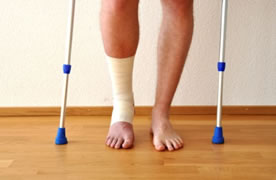 Marc Gasol of the Memphis Grizzlies will be out on recovery for an indefinite amount of time after sustaining a right foot injury in the game against the Portland Trail Blazers. Gasol had to leave the game during the first quarter. Head coach Dave Joerger said that “Marc is a guy who lays it out there for his teammates and the fans. We’re going to fight, scratch and claw.” Gasol’s status was unknown at the time.
Marc Gasol of the Memphis Grizzlies will be out on recovery for an indefinite amount of time after sustaining a right foot injury in the game against the Portland Trail Blazers. Gasol had to leave the game during the first quarter. Head coach Dave Joerger said that “Marc is a guy who lays it out there for his teammates and the fans. We’re going to fight, scratch and claw.” Gasol’s status was unknown at the time.
A broken foot requires immediate medical attention and treatment. To learn more, contact Dr. Nicholas Megdanis from Greater Queens Podiatry PLLC. Our doctor will treat your foot and ankle needs.
Broken Foot Causes, Symptoms, and Treatment
A broken foot is caused by one of the bones in the foot typically breaking when bended, crushed, or stretched beyond its natural capabilities. Usually the location of the fracture indicates how the break occurred, whether it was through an object, fall, or any other type of injury.
Common Symptoms of Broken Feet:
Those that suspect they have a broken foot shoot seek urgent medical attention where a medical professional could diagnose the severity.
Treatment for broken bones varies depending on the cause, severity and location. Some will require the use of splints, casts or crutches while others could even involve surgery to repair the broken bones. Personal care includes the use of ice and keeping the foot stabilized and elevated.
If you have any questions, please feel free to contact our office located in Bayside, New York. We offer the newest diagnostic and treatment technologies for all your foot and ankle needs.
| Bayside Office 4401 Francis Lewis Blvd Suite L3B Bayside, NY 11361 Phone: (718) 229-0222 Fax: (718) 717-0275 | Monday: 9:30am - 7pm |
E-mail us with any questions